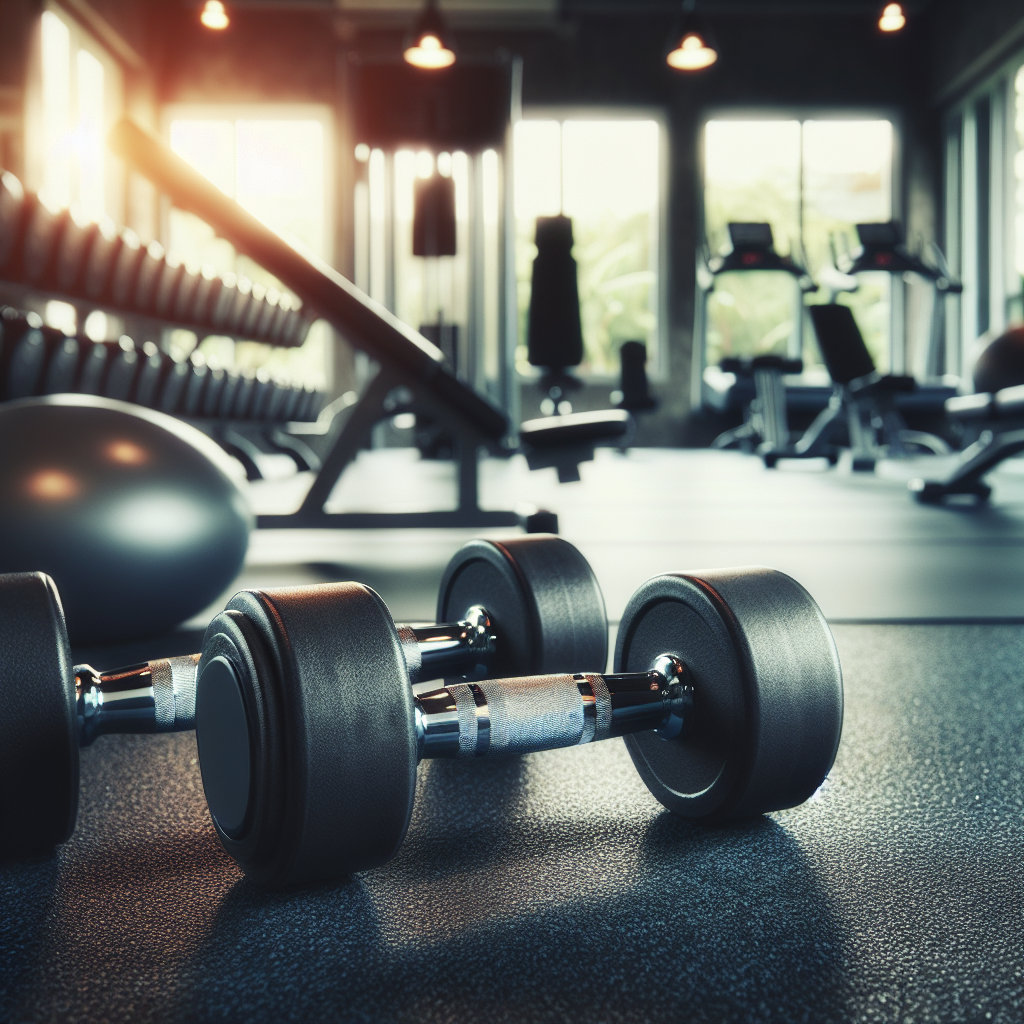Understanding How Many Sets and Reps To Build Muscle Effectively
Eager to build muscle effectively yet unsure how to start? You’ve landed on the right page. In this article, “Understanding How Many Sets and Reps To Build Muscle Effectively”, we will demystify all your doubts. You will learn the science-backed fundamentals of maximizing muscle growth, answering that frequently asked question: “how many sets and reps to build muscle?” An engaging and insight-driven read, you can look forward to practical tips that consider your fitness level, goals, and more. Embark on your journey to a fitter, stronger you with confidence and knowledge.

Understanding Reps and Sets
You may have continued to hear the terms ‘reps’ and ‘sets’ thrown around all the time in the fitness sphere. But, have you ever wondered what they actually mean? Let’s break it down for you.
Definition of Reps and Sets
In the world of exercise, a ‘rep’ or repetition refers to the number of times you perform a specific exercise. And, a ‘set’ refers to the number of cycles of reps that you complete. Confused? Think of it this way, if you were to do 20 push-ups, then take a break, and then do another 20, you would have completed two ‘sets’ of 20 ‘reps’ each.
Importance of Reps and Sets in Building Muscle
Reps and sets are foundational in understanding the basics of strength and muscle building. Different numbers of reps and sets are used for different goals – whether you’re looking to build strength, size, endurance, or a combination of these factors.
How Reps and Sets Function In Muscle Building
Reps and sets play a complex role in muscle building, where they interact with multiple factors, including exercise intensity, type of exercise, and your body’s current physical capacity.
The Role of Reps in Muscle Activation
Reps are vital for triggering muscle activation. When you do a repetition of an exercise, you contract or ‘work’ the muscle, causing muscle fibers to act. The higher the number of reps, the more your muscle fibers are activated, and the stronger the stimulus for muscle growth.
The Role of Sets in Muscle Endurance
Sets play a key role in building endurance. Your endurance increases when you do more sets, as your muscles have to work harder for a longer period. Hence, if you want to improve your muscle stamina, consider increasing the volume of your sets.
Connection Between Reps, Sets and Muscle Growth
Reps and sets are interconnected and can directly influence muscle growth. Generally, more reps and sets give your muscle tissues a stronger ‘message’ to grow. But, remember, it’s about striking a balance as too many reps and sets could lead to overtraining and injury.

Ideal Number of Reps and Sets
The ideal rep and set range depends largely on your personal fitness goals.
Recommended Number of Reps to Build Muscle
If you’re aiming to build muscle, the common recommendation is to lift heavier weights in the 6-12 rep range.
Recommended Number of Sets to Build Muscle
A typical range for muscle growth could be 3-6 sets per exercise. However, this can depend on the intensity of the exercise.
Factors Determining Ideal Reps and Sets
A number of factors come into play when determining your ideal rep and set ranges. These include your current fitness level, the exercise type you’re doing, and your specific muscle-building goals.
Low Reps versus High Reps
There’s often a debate about which is better – low reps with high weight or high reps with low weight?
Low Reps with High Weight
Low reps with heavy weights can be a powerful stimulus for muscle and strength building. This strategy is often practiced by powerlifters and bodybuilders.
High Reps with Low Weight
Conversely, high reps with lighter weights can be beneficial for toning muscles and enhancing muscle endurance.
Benefits and Drawbacks of Low Reps vs High Reps
Both strategies have their pros and cons. While low reps with high weight can trigger more extensive muscle growth, it can also increase injury risk. High reps with low weight, on the other hand, may not stimulate muscle growth as effectively, but it enhances muscle endurance and is less likely to lead to injury.

Low Sets versus High Sets
A parallel discussion exists around low sets with high intensity and high sets with low intensity.
Low Sets with High Intensity
Low sets with high intensity are a quick and effective way to trigger muscle growth. However, the risk of fatigue and injury increase.
High Sets with Low Intensity
High sets with low intensity, on the other hand, are a great method to build endurance and promote fat burning.
Benefits and Drawbacks of Low Sets vs High Sets
While low sets with high intensity can stimulate substantial muscle growth, they could lead to overtraining or injury. High sets with low intensity improve endurance but might not be as effective in building muscle.
Variations to Regular Training
To break through fitness plateaus, you can use variations to your regular training program.
Drop Sets
A drop set involves doing as many reps as possible until fatigue, then dropping the weight and continuing to do more reps.
Super Sets
Super sets involve performing two exercises back-to-back with no rest in between.
Negative Reps
Negative reps involve focusing on the eccentric phase of the lift by slowing down the lowering phase of an exercise.

Understanding Muscle Fatigue
Muscle fatigue can often be mistaken for lack of progress, but it’s an essential part of muscle building.
The Role of Muscle Fatigue in Muscle Building
Muscle fatigue can be a sign that your muscles are being challenged and are in a state of growth.
How to Prevent Overtraining
To prevent overtraining, it’s essential to listen to your body, ensure proper nutrition, hydration, and adequate rest.
Dealing with DOMS (Delayed Onset Muscle Soreness)
DOMS is the soreness you experience 24-72 hours after a strenuous workout. It’s a normal part of building muscle, and you can manage it by proper rest and nutrition.
Role of Nutrition in Building Muscle
Nutrition is often the missing piece in the muscle-building puzzle.
Importance of Protein in Muscle Recovery
Protein is vital for muscle recovery and growth. It can repair exercise-induced damage and stimulate muscle growth.
Role of Carbohydrates and Fats in Muscle Building
Carbohydrates provide the energy needed to perform workouts, and fats are essential for hormonal health and inflammation management.
Impact of Proper Hydration
Proper hydration can enhance performance, reduce fatigue, and facilitate recovery.

Importance of Rest and Recovery
Rest and recovery are as important as the workout itself.
Recovery Period between Sets
An adequate recovery period between sets is essential to maximize lifting efficiency and reduce risk of injury.
Rest Periods between Workouts
Rest periods between workouts are crucial to recover effectively from one workout and prepare for the next one.
The Role of Sleep in Muscle Building
Sleep has a profound effect on muscle recovery and growth. It’s during sleep when actual muscle growth happens.
FAQ About Sets and Reps
There are a few common questions that people have about sets and reps.
What if I Can’t Complete the Reps in a Set?
If you can’t complete the reps in a set, it’s likely that the weight is too heavy, or you’re fatigued. You should adjust the weight or consider taking a short rest.
Can More Reps Make Up for Lighter Weights?
More reps can compensate to some extent for lighter weights, but heavier weights can stimulate muscle growth more effectively.
Should I Increase Sets or Reps for Faster Muscle Growth?
It’s usually more beneficial to initially increase reps before increasing sets for faster muscle growth. However, both are necessary for long-term muscle-building success.
And there you have it! An in-depth guide to understanding reps, sets, and their role in your muscle-building journey. Remember, the key is to listen to your body and strike a balance between training and recovery. Happy lifting!


Pingback: Understanding How Much to Eat to Efficiently Build Muscle – Lose Weight With Absolute Minimal Diet – Your All In One Guide to Weight Loss & Nutrition
Pingback: Ultimate Guide: How to Build Muscle for Women – Lose Weight With Absolute Minimal Diet – Your All In One Guide to Weight Loss & Nutrition
Pingback: Understanding the Realistic Timeframe to Build Muscle: An In-depth Guide – Lose Weight With Absolute Minimal Diet – Your All In One Guide to Weight Loss & Nutrition
Pingback: How Often Should a 58 Year Old Workout to Build Muscle – Lose Weight With Absolute Minimal Diet – Your All In One Guide to Weight Loss & Nutrition
Pingback: Effective Ways on How to Build Muscle Beyond Doing Pushups - Lose Weight With Absolute Minimal Diet - Your All In One Guide to Weight Loss & Nutrition